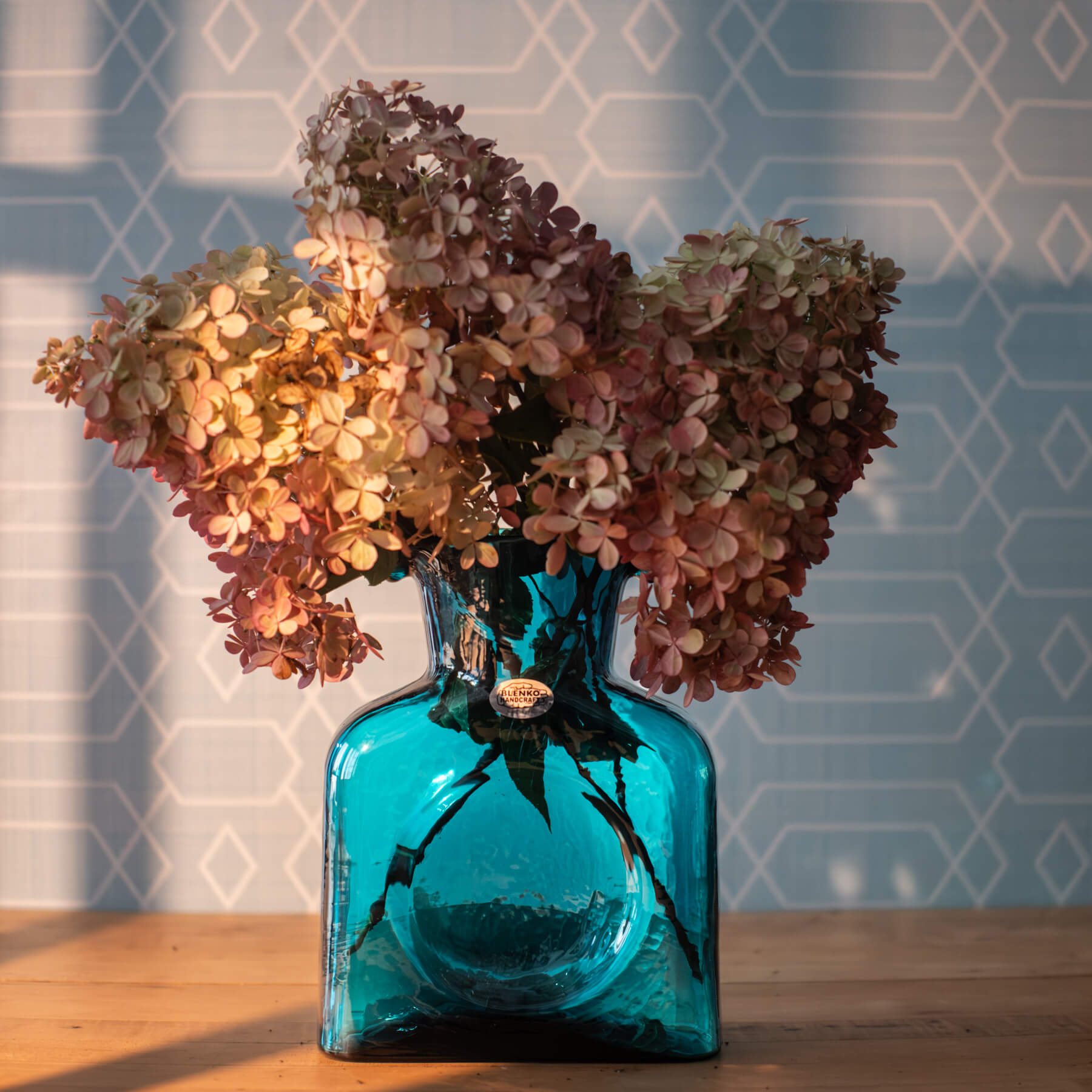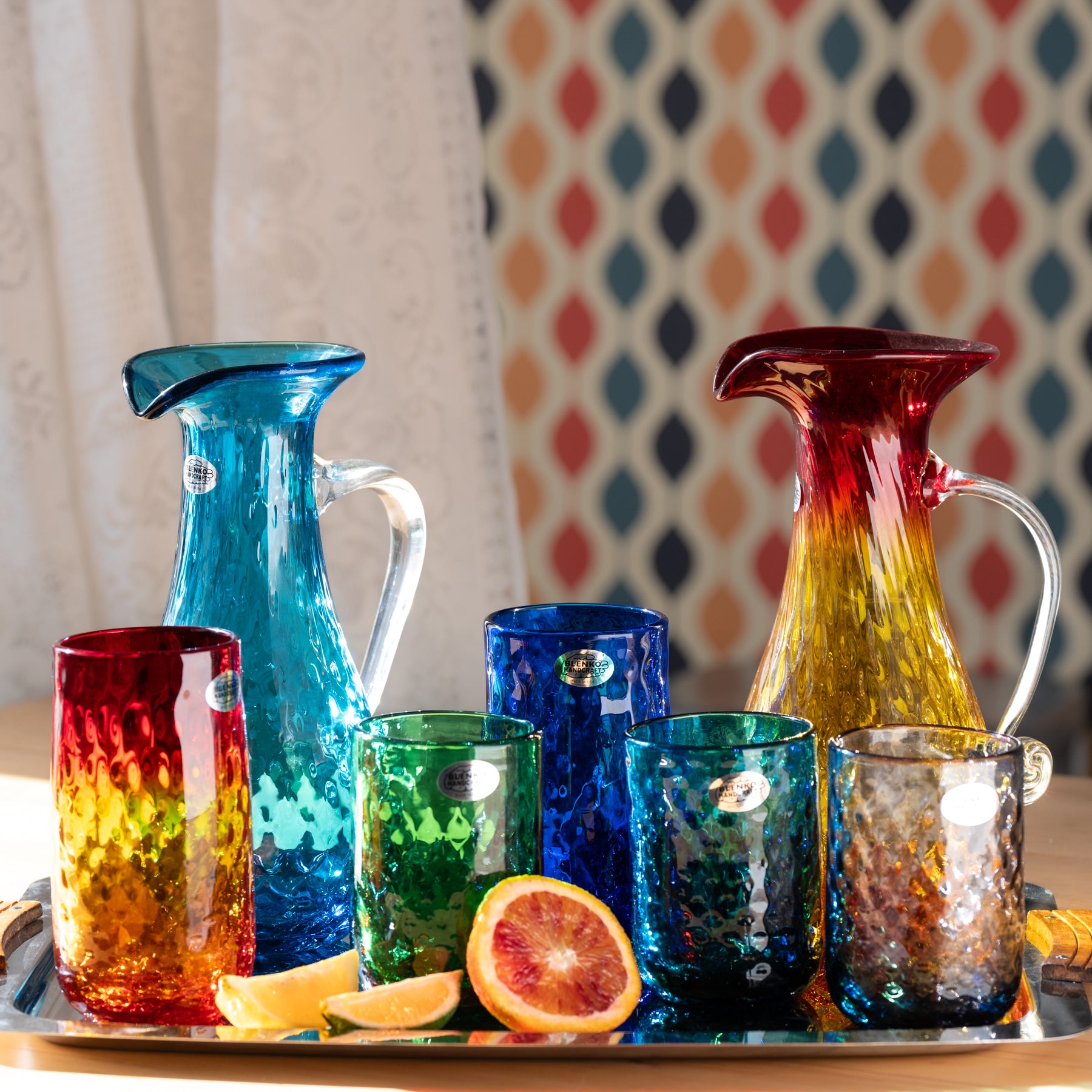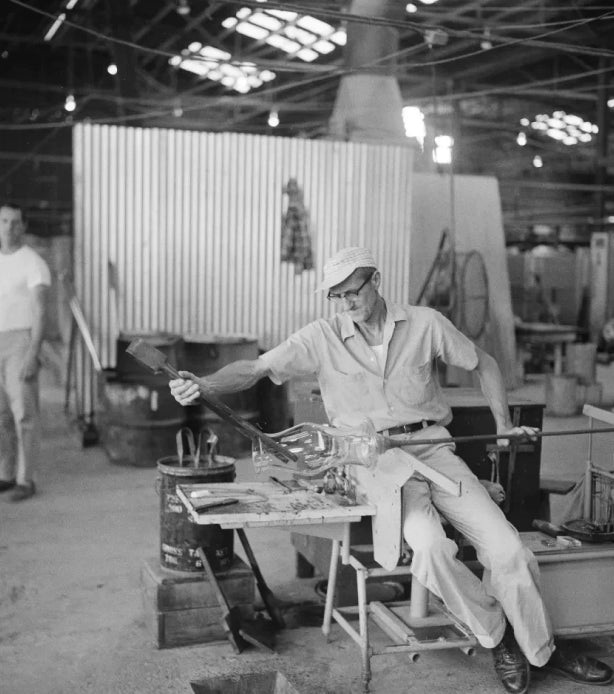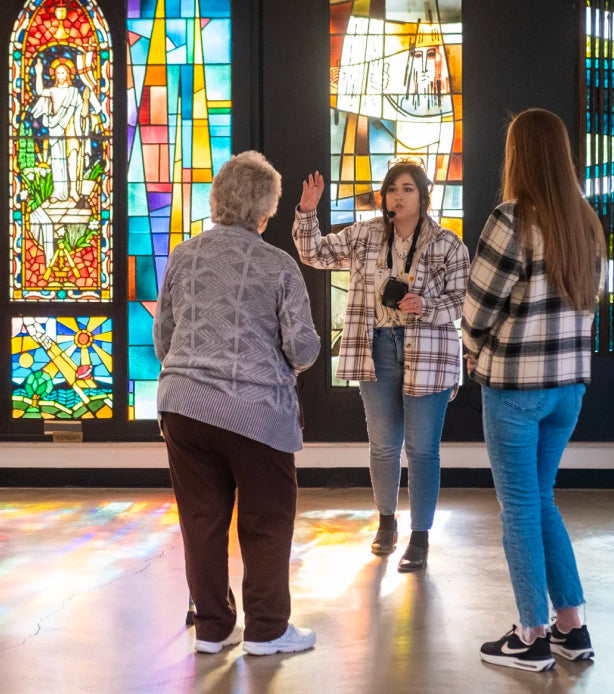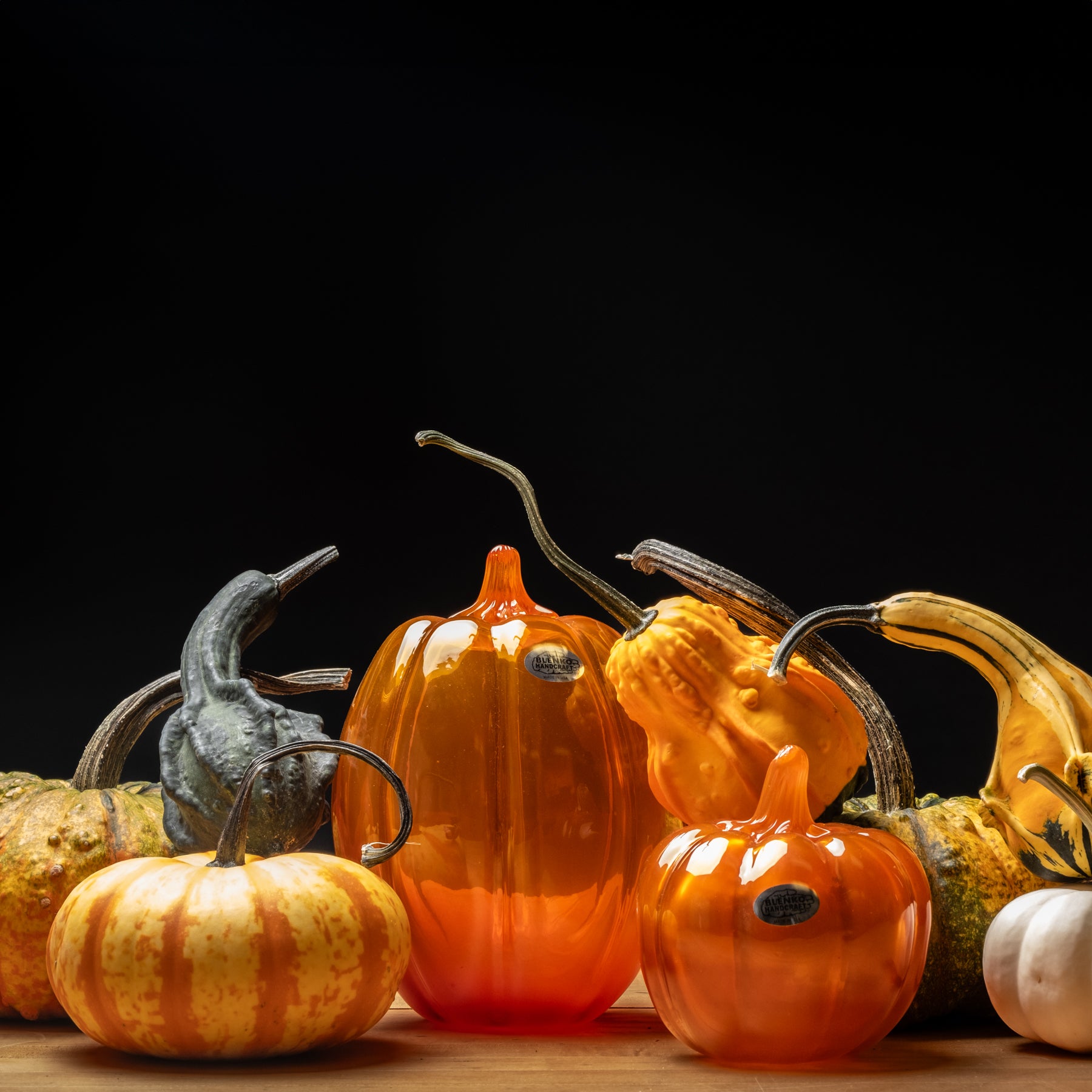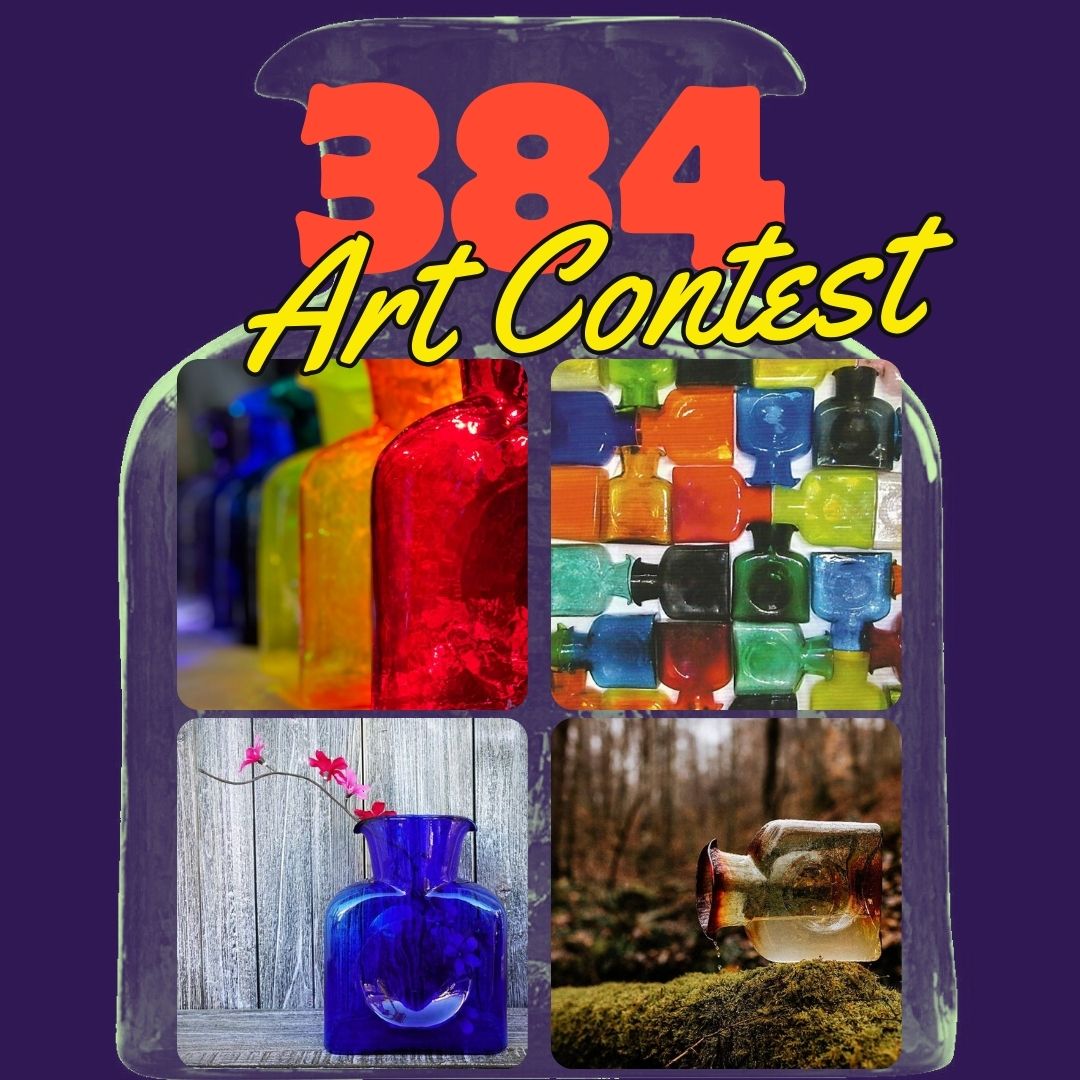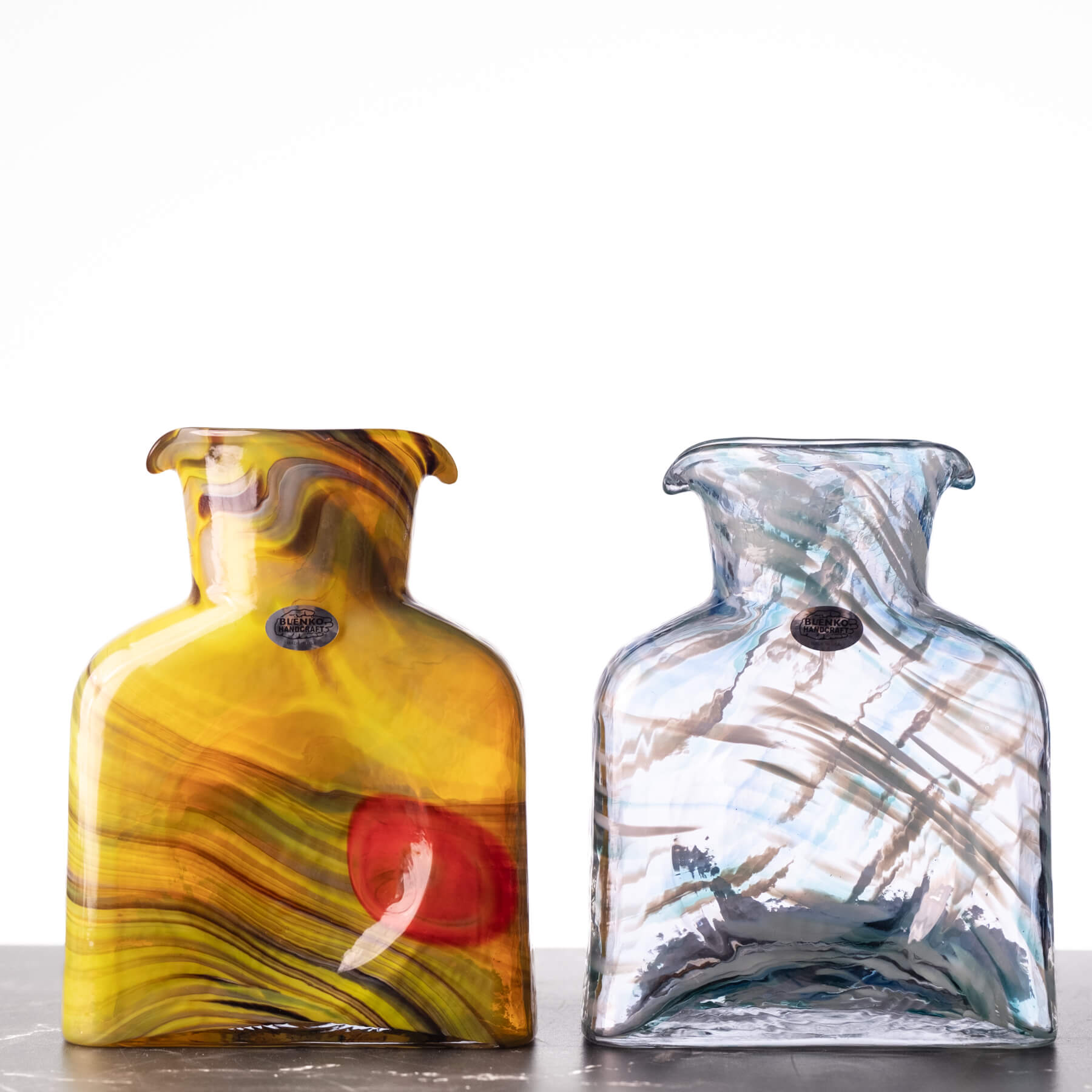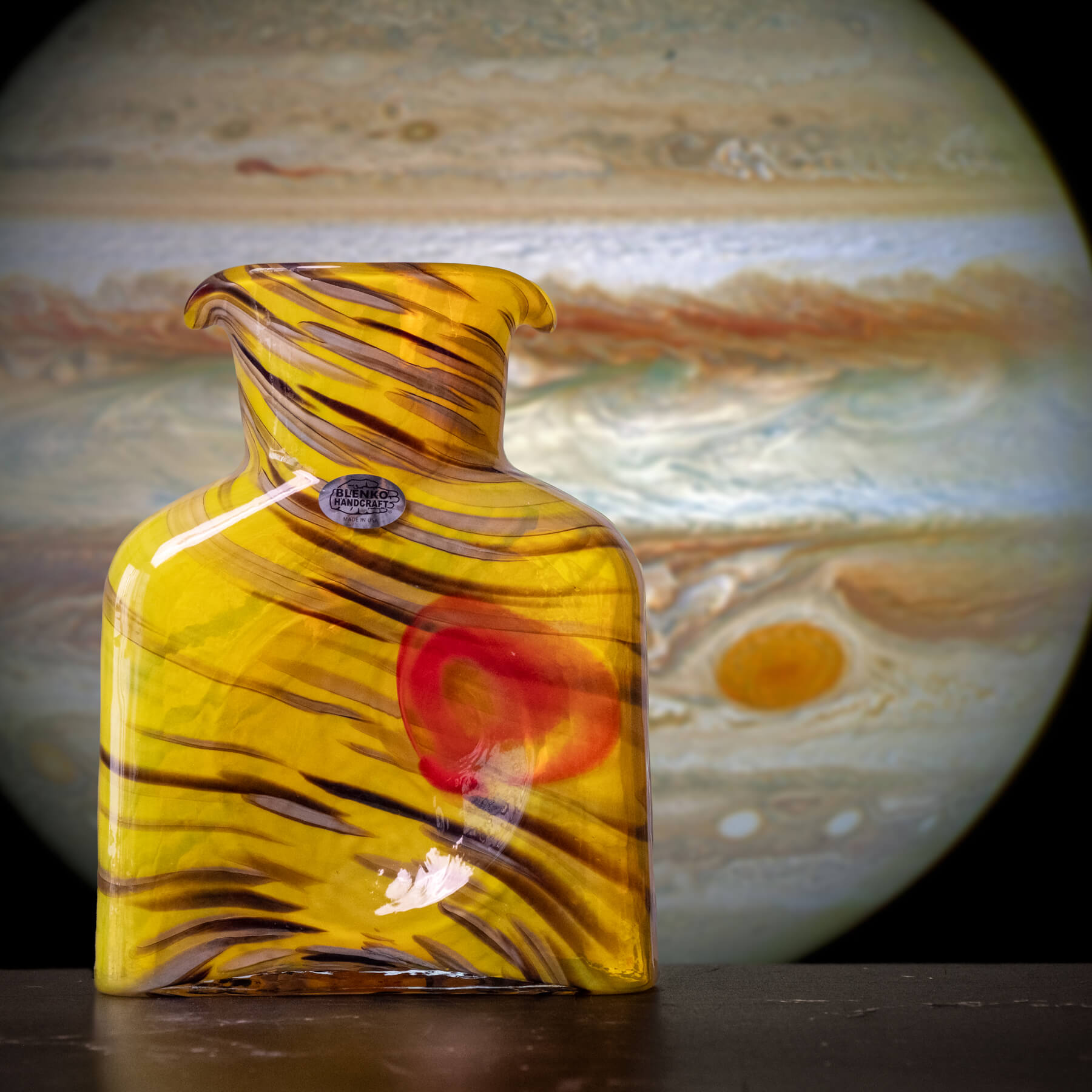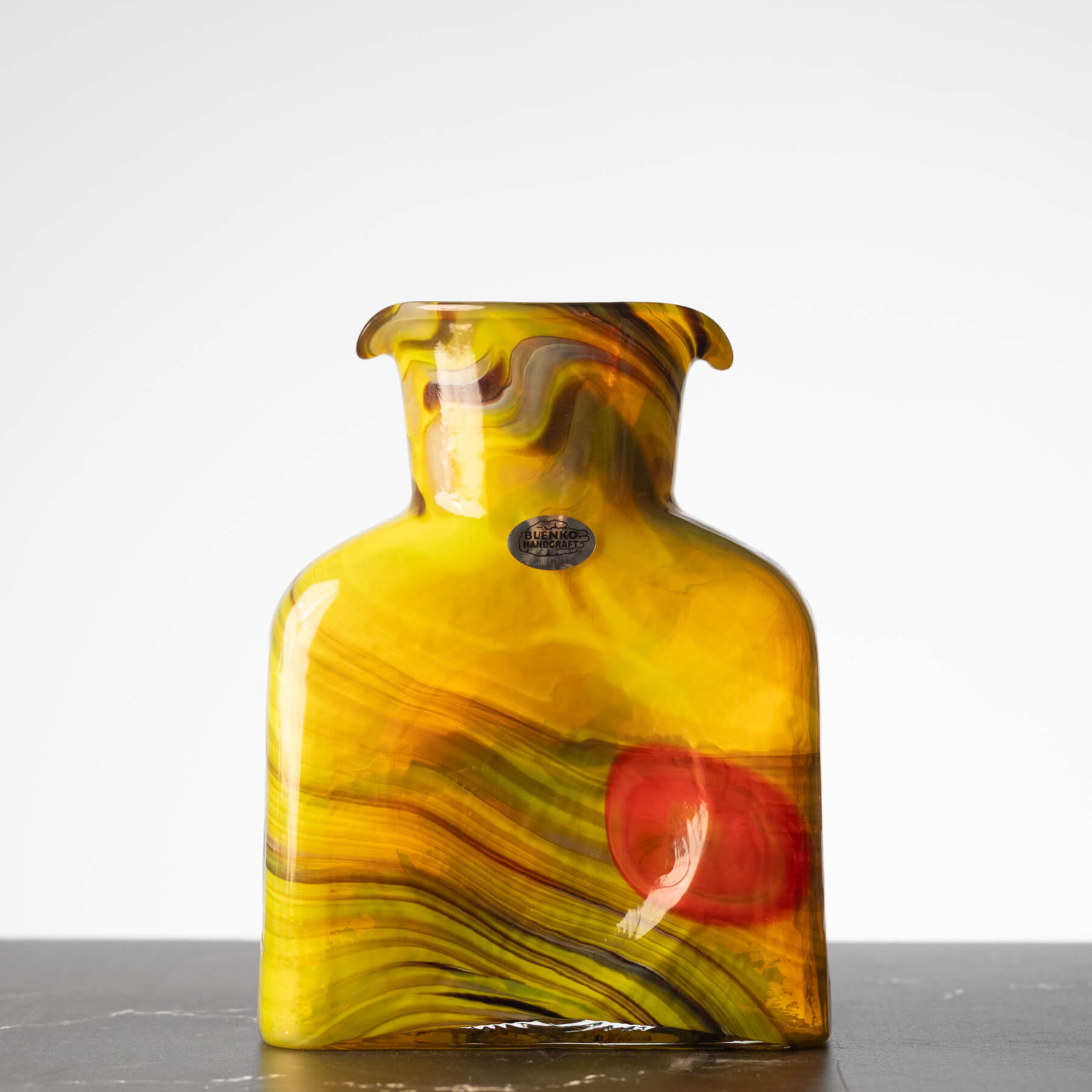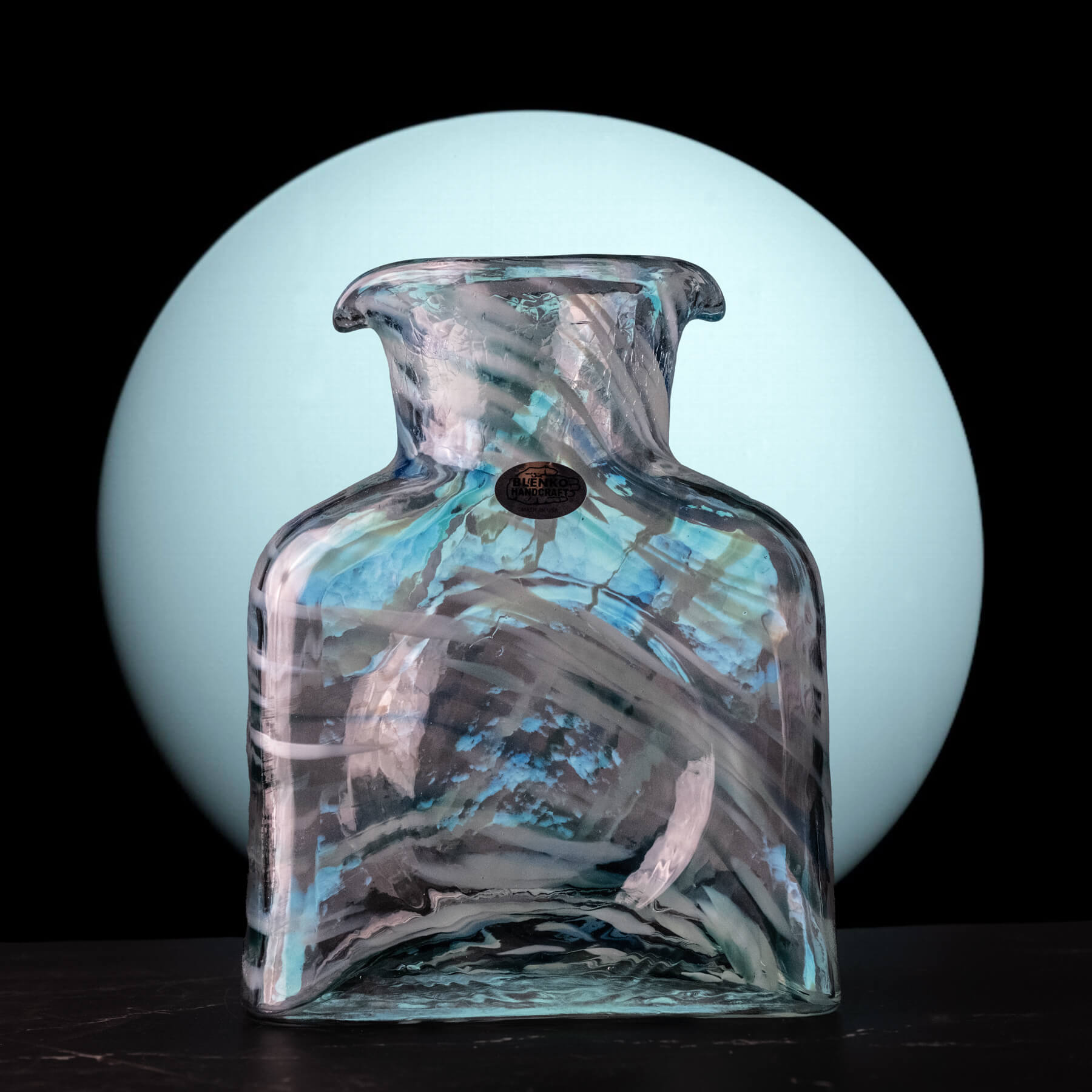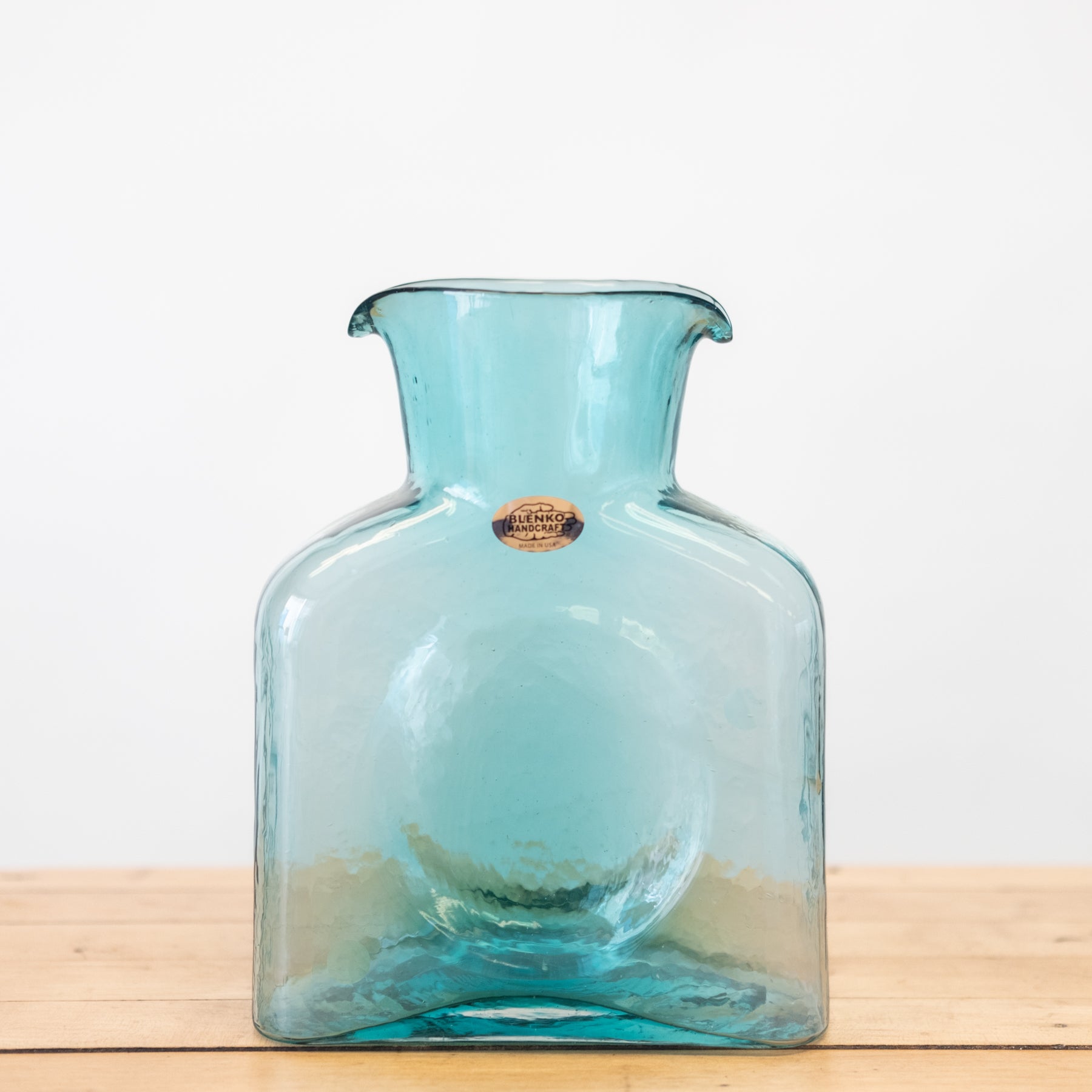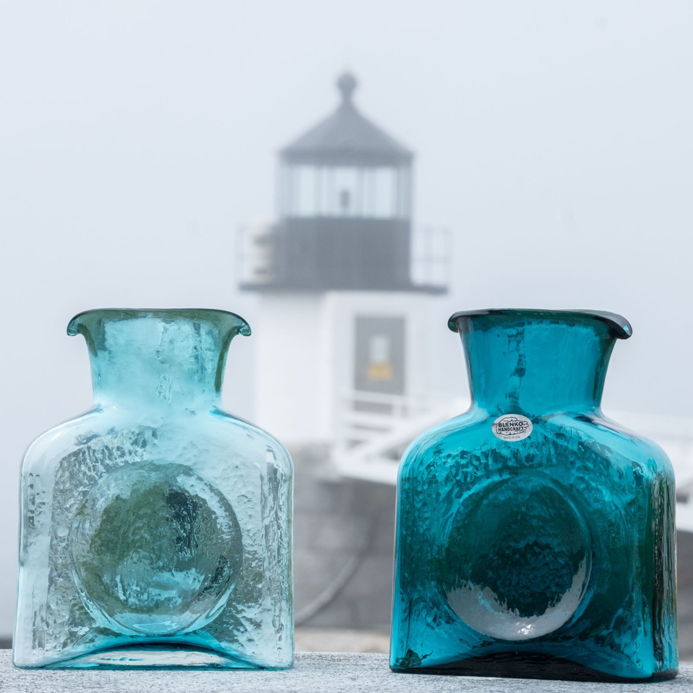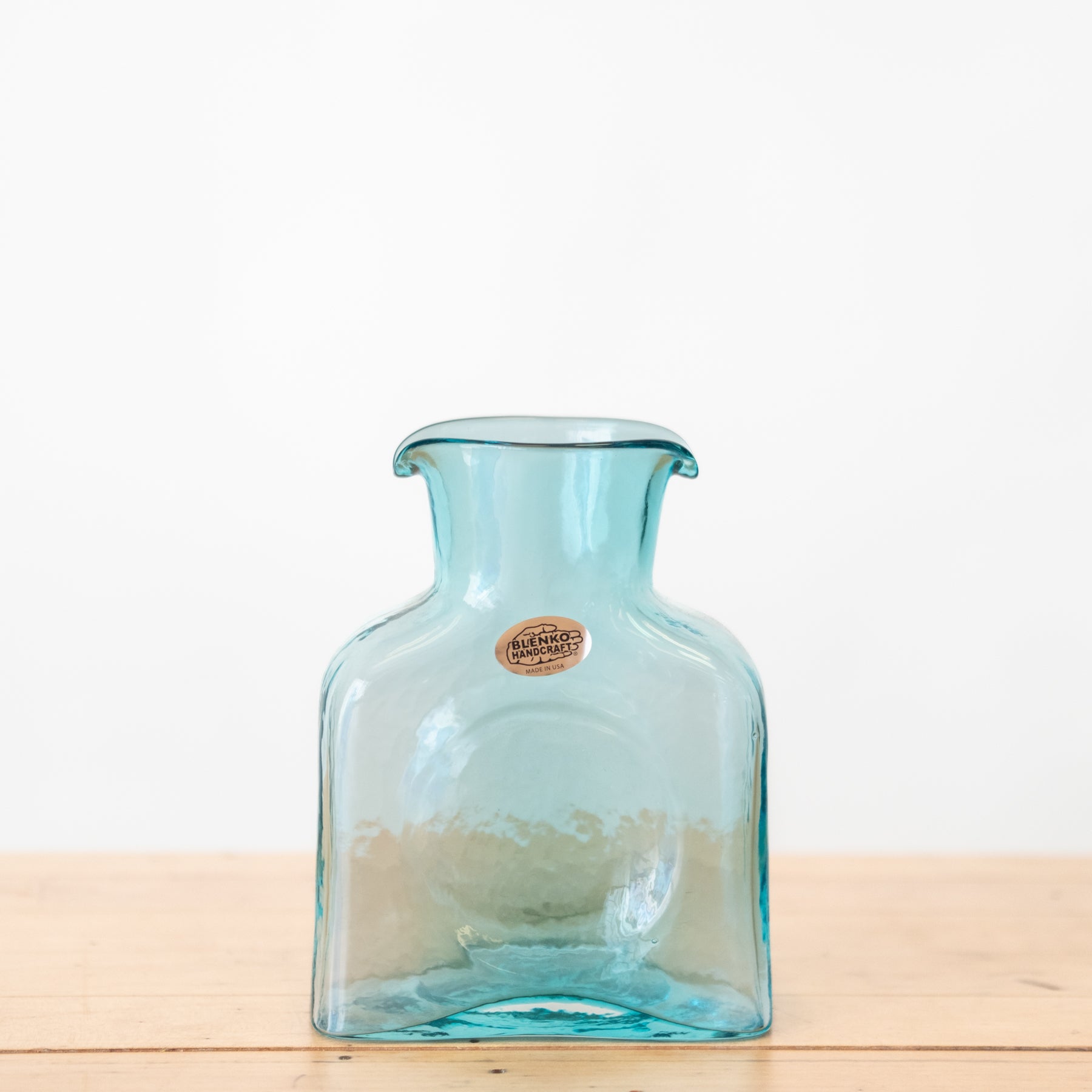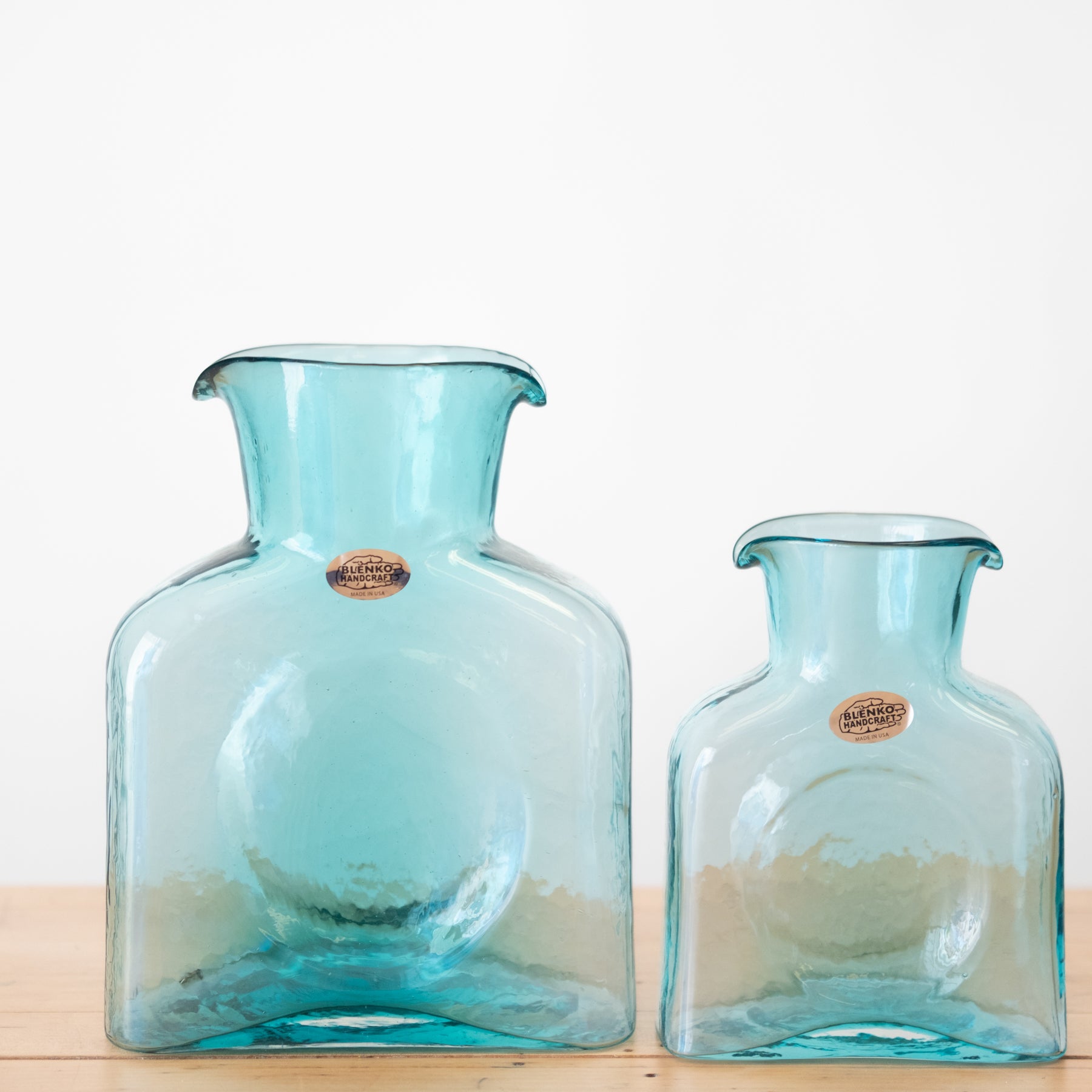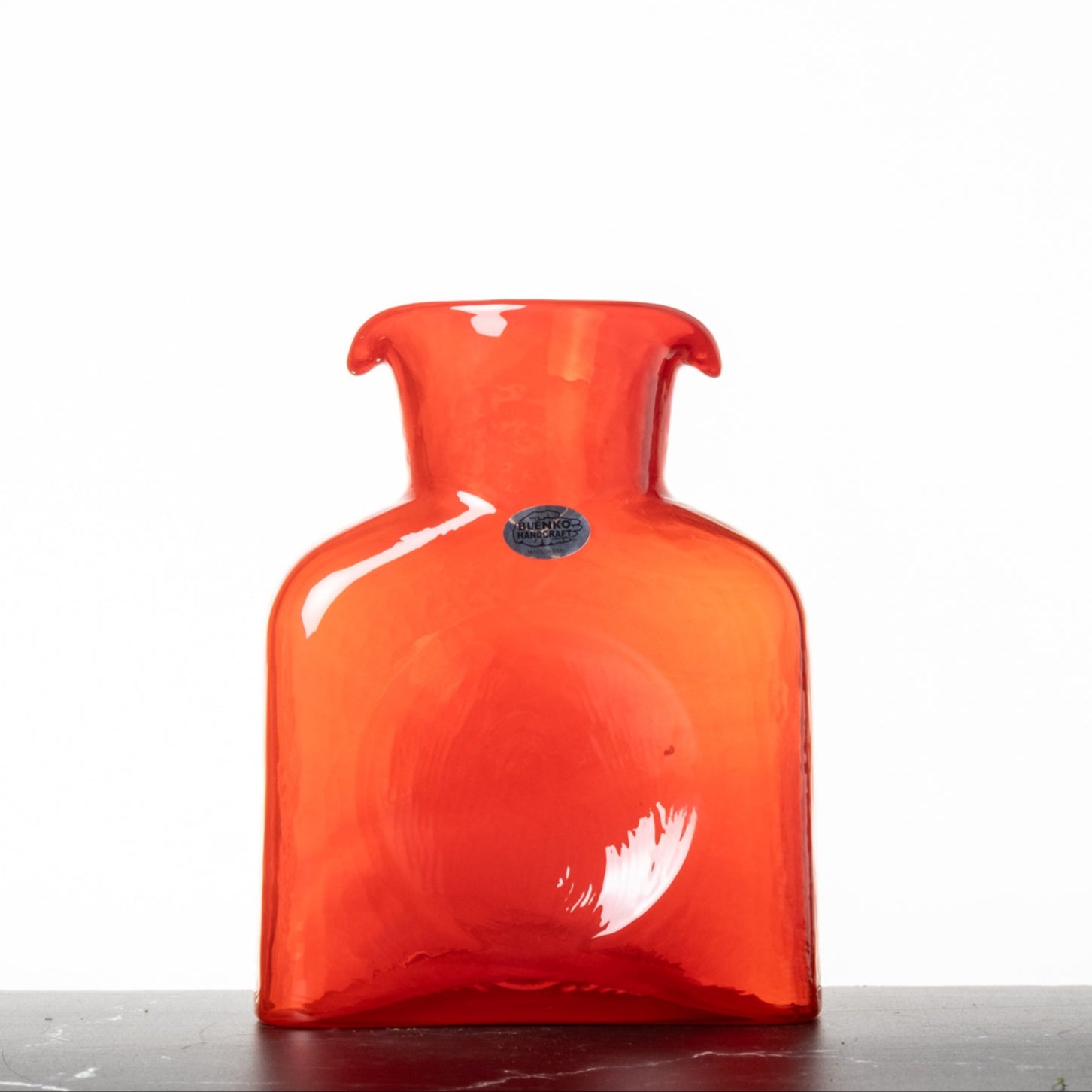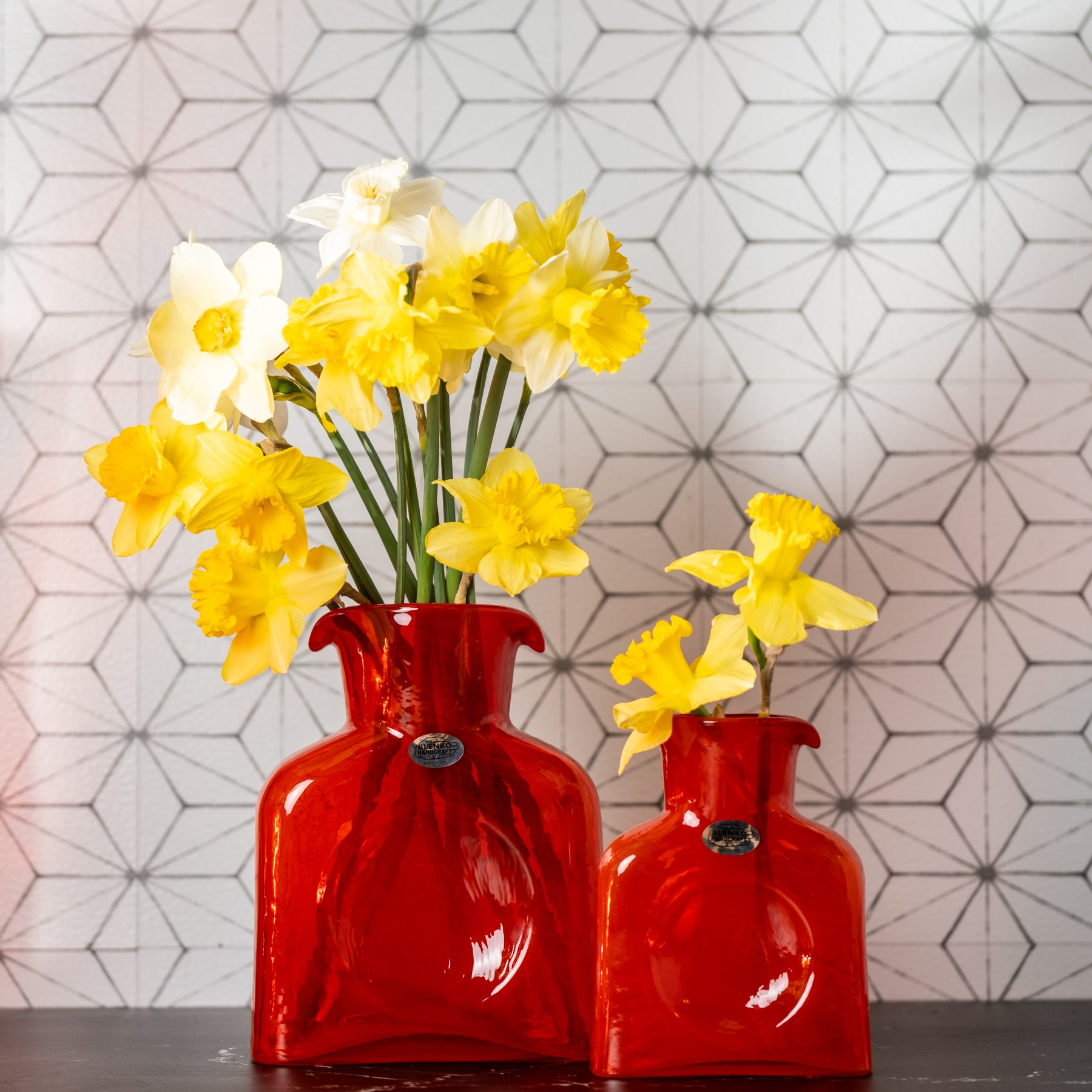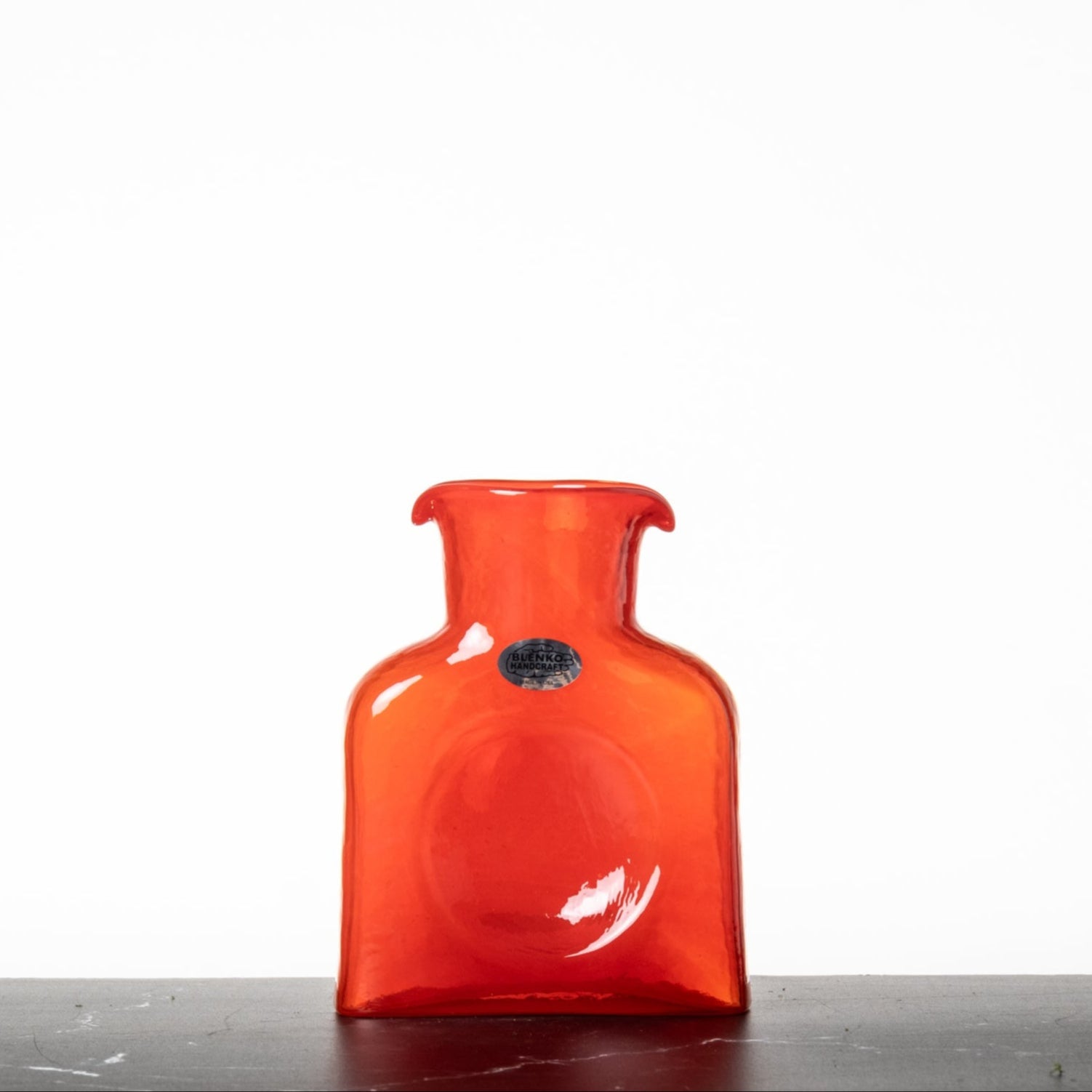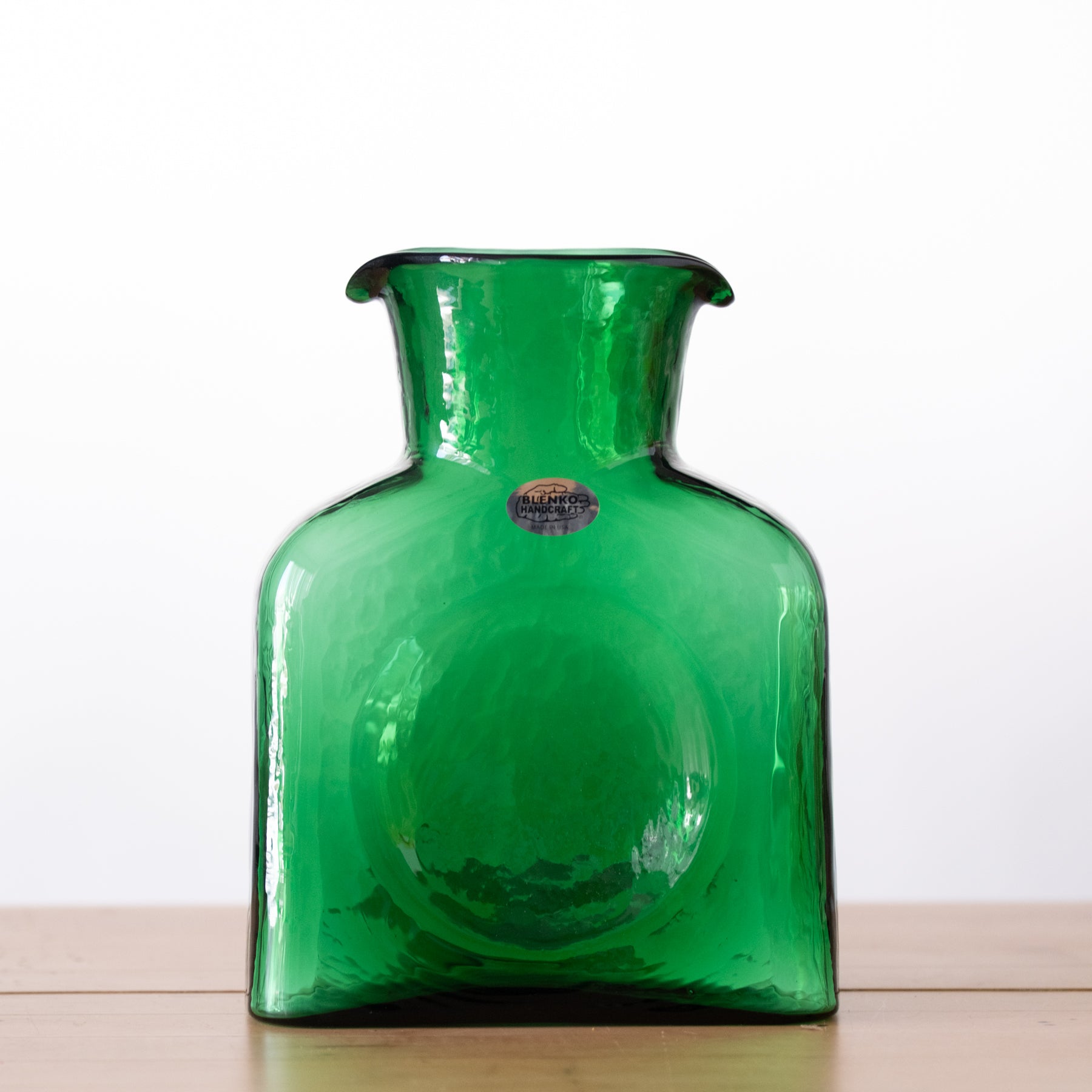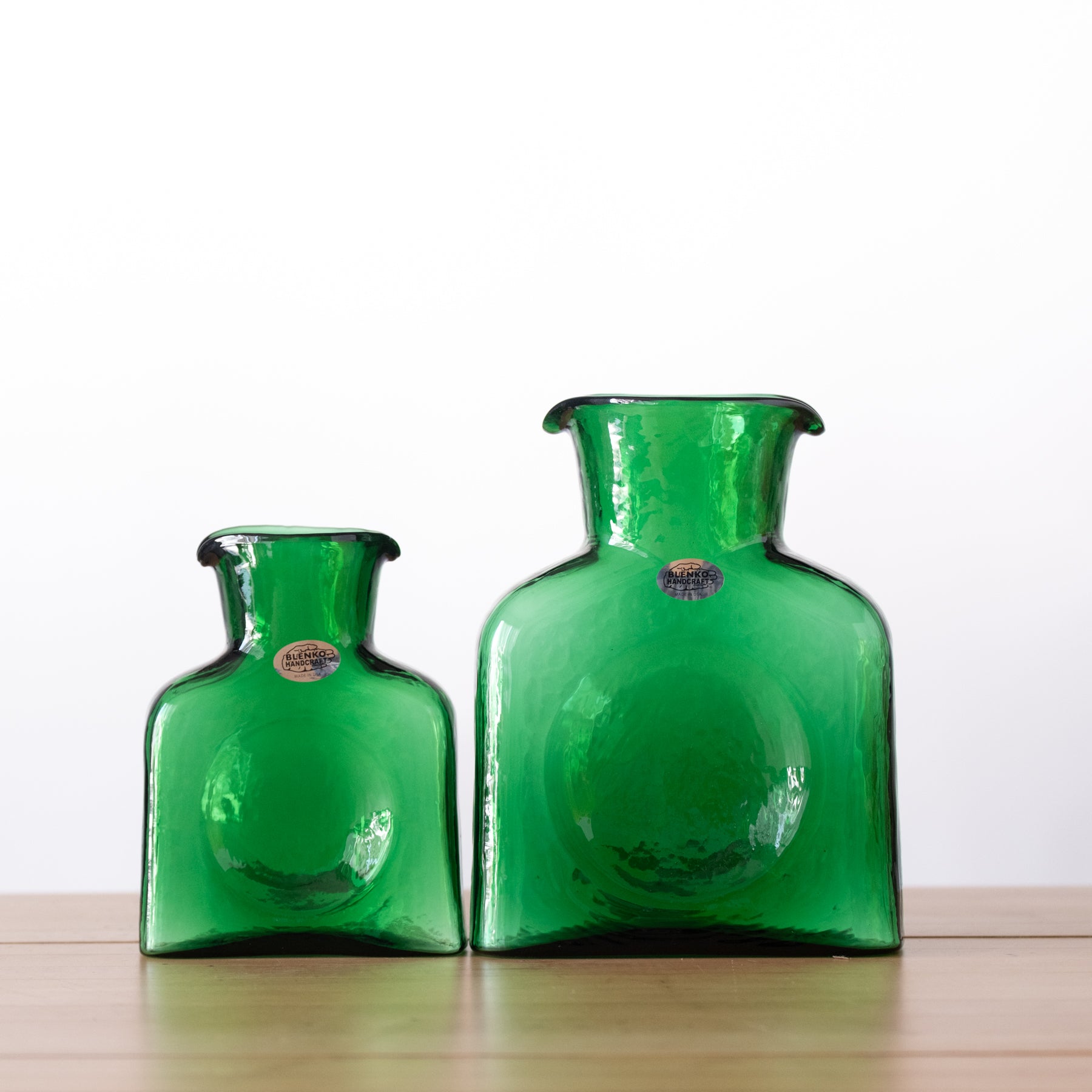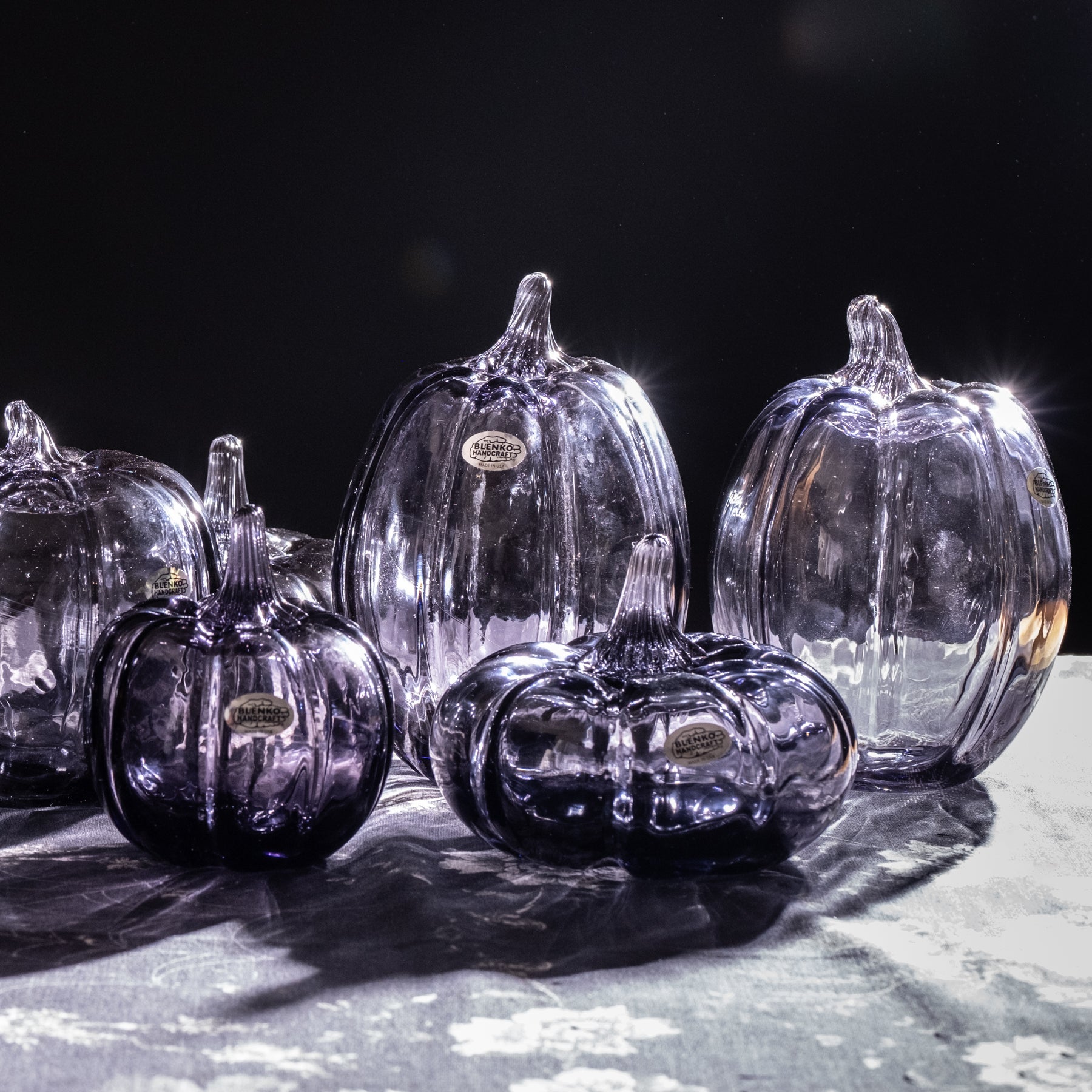
Heliotrope’s Here! The Rainbow is Nearing Completion! <😈>

We were inspired by late 1950s Lilac and Charcoal in equal measure and our new manganese-based light grey-purple. Purple is a beguiling color for glass - one of the earliest and most desirable glass colors ancients achieved.
🚨Nerd Alert!🚨
Manganese purple glass colors prefer a different style of furnace than our other colors! Heliotrope needs a “pot” furnace - a large ceramic chamber insulated by a shell of firebricks. Pot furnaces are heated from the outside so that the flame doesn’t touch the glass itself because Manganese purples are oxidizing colors. This means that these colors “play differently” on the bench and in the furnace.
Minor Chords
Did you know that cool-toned colors actually physically cool off faster when being handled? Aye! Small differences in temperature in hot glass can produce a phenomenon known as “cords.” These are small swirls or rings visible in the finished glass. These are not structural or problematic - just cosmetic! Our Creative Director prizes cordy glass - he loves the tactile texture and visual interest of the effect!
He Heard There Was A Secret Chord
Heliotrope is one of the coolest colors we’ve made - literally and figuratively. Manganese purples are fascinating because under indoor lighting, they drift toward the grey end of the color spectrum - but in sunlight, the purple values gain the upper hand and show distinct violet. The greater-than-usual cords in Heliotrope capture this - and show small bands of tone-on-tone that make the whole phenomenon pop.
Some Colors Are Just Like That, You Know?
Veteran collectors all know that 1953’s shocking green Chartreuse color was absolutely prone to seediness. The small bubbles percolate through the vivid green, and it’s become a hallmark and benchmark to collectors when they spot the color in the wild. Our Ganymede color was also a pot furnace color – and exhibited to an even greater degree this tendency to cordiness. Luckily, as we’ve said, it does not affect the integrity or strength of the glass - but it gives it visual texture and interest!
Fun Facts About Manganese Glass!
Manganese as an additive to glass is also used as a decolorant – to remove and neutralize the presence of other impurities that would tint the glass green or yellow. The curious thing about these manganese crystal glasses is that if they get long-duration sun exposure, the glass will often acquire a purple tint over time. Scientists aren’t entirely sure why, but the oxidizing nature of Manganese is the biggest clue. Our Creative Director recalls a visit to an antique store in the foothills of Colorado where there were 100s of bottles displayed with the most delicate violet tints


